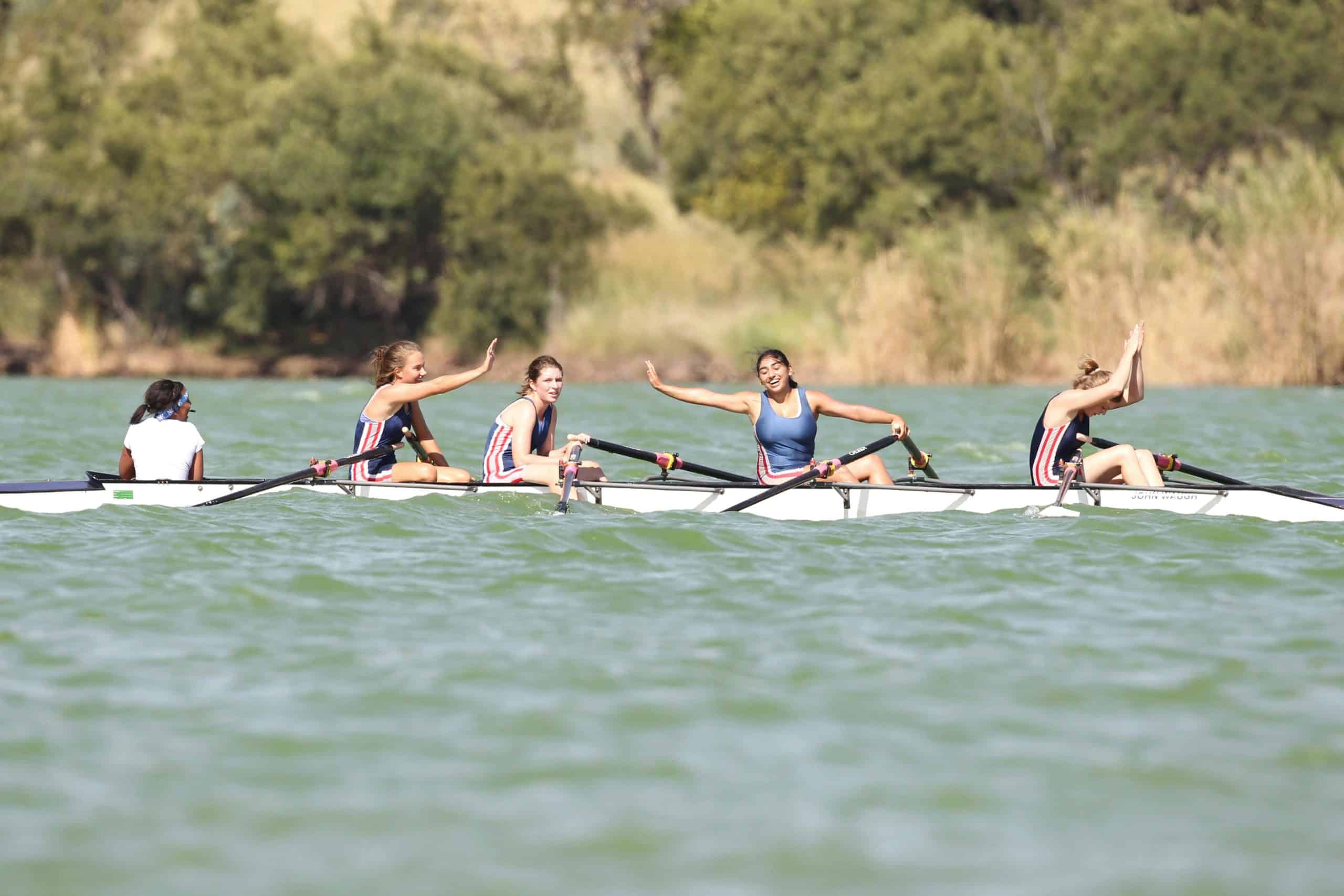Rowing is a sport that requires precision, endurance, and optimal performance. In the quest for speed, distance, and stroke efficiency, rowers and coaches have long sought ways to fine-tune their technique and training. The advent of modern technology, particularly data analytics, provides a powerful tool for these endeavors. Real-time analytics offer nuanced insights into the rowing process, allowing athletes and their coaches to monitor each stroke, acceleration, and even boat acceleration in real-time. With this data, they can make immediate adjustments to improve performance, speed, and efficiency.
Harnessing Data for Training and Performance
The incorporation of data into the training regime is not just about capturing as much information as possible. It’s about integrating meaningful, actionable insights into the training process. Data can provide a detailed breakdown of each training session, including stroke rate, stroke length, boat speed, and distance covered. This information is invaluable for developing and fine-tuning training plans.
Cela peut vous intéresser : What Impact Does Mindful Breathing Have on Free Dive Times?
GPS technology and other sensors can monitor the boat’s path, speed, and acceleration in real-time. These metrics can provide crucial feedback to the rower, helping them understand whether adjustments need to be made. For example, if the GPS shows a boat is veering off course, the rower can correct their path before it affects their time or distance.
Moreover, data can be used to track the athlete’s physiological responses during training – heart rate, oxygen consumption, and lactic acid levels. Tracking these parameters helps tailor training programs to the individual rower’s strengths and weaknesses, optimizing their performance over time.
En parallèle : What Are the Psychological Benefits of Team Sports for Adolescents?
Understanding the Stroke in Real-Time
A single stroke in rowing is a complex interaction of power, technique, and timing. Real-time analytics can provide a deep understanding of how each component of the stroke contributes to the boat’s speed and the rower’s energy efficiency.
Sensors attached to the oar and seat can measure the force exerted at each part of the stroke, the time it takes to complete a stroke, and the seat’s speed and acceleration. This data helps the rower and coach analyze the stroke in real-time, identifying any inefficiencies or areas for improvement.
The stroke rate, or the number of strokes taken per minute, is another critical factor in rowing performance. Real-time data can help rowers maintain an optimal stroke rate in relation to their speed and distance, ensuring they’re maximizing their energy usage throughout the race.
Leveraging Feedback and Technology for Improvements
Rowing is a sport where each second and stroke matter significantly. Real-time analytics plays a significant role in providing instantaneous feedback to rowers. This feedback can guide them to adjust their technique, power, and rhythm during training sessions or actual races, leading to performance enhancement.
Modern technology such as video analysis synced with sensor data adds another layer of depth to the feedback process. By watching their form in real-time alongside the corresponding data, rowers can see exactly how their technique impacts their speed, distance, and stroke rate. This dual feedback mechanism enables rowers to make informed adjustments to their form immediately, without having to rely on memory or intuition.
Implementing Data for Race Strategies
Developing effective race strategies is critical for success in competitive rowing. Factors such as the start, course conditions, and tactics against opponents all need to be considered.
Data gathered from previous races and training sessions can be analyzed to develop race strategies. For instance, data on boat speed and acceleration can be used to determine the optimal starting sequence and pace. Real-time information on tidal currents and wind conditions can inform decisions on the best course direction and lane choice.
Additionally, data on other competitors can be used to predict their strategies and performance. Having a detailed understanding of your own strengths and weaknesses in comparison to your competitors can help you plan a race strategy to capitalize on your advantages.
Enhancing Athlete’s Health and Injury Prevention
Beyond performance enhancement, real-time analytics can also be instrumental in maintaining athletes’ health and preventing injuries. Sensors can detect changes in rowers’ form or technique that may indicate fatigue or the onset of potential injury.
For instance, if a rower’s stroke force decreases significantly or their stroke rate becomes erratic, it can be a sign of fatigue. With this real-time data, coaches can intervene to prevent over-training and the associated risks of injury. Moreover, data on heart rate and oxygen consumption can help in monitoring the athlete’s health and fitness levels, ensuring they are in peak condition for optimal performance.
In a sport as demanding as rowing, real-time analytics provide an edge by translating raw data into actionable insights for performance improvement, strategic planning, and injury prevention. It’s a game-changer, propelling the sport into the future while enhancing the skills and capabilities of individual athletes.
Integrating Wearable Technology and Sensors in Rowing
Wearable technology presents a new frontier in the quest to enhance rowing performance. The use of wearable sensors and devices can provide a wealth of real-time data, opening a window to monitor and optimize the rower’s performance with unprecedented precision.
Inertial sensors, attached to the rower’s body or equipment, can record motion-related data like acceleration, rotation, and angular velocity. This data can help in understanding the rower’s movement dynamics, enabling them to fine-tune their technique for maximum efficiency. For instance, inertial sensors can monitor the rowing motion’s symmetry, a key aspect in maintaining boat balance and avoiding energy waste.
Heart rate monitors provide real-time data on the rower’s cardiovascular response, reflecting their physical exertion level. Consistent monitoring of heart rate can help in adjusting the intensity of training sessions, ensuring that the rower is training at optimal zones for endurance building without risking overexertion.
Additionally, Differential GPS, a modification of the conventional GPS technology, improves positional accuracy. This enhanced accuracy can track the boat’s speed and direction with higher precision, offering valuable insights like whether the boat is moving in a straight line or if the rower is maintaining a consistent pace.
Utilizing Real-Time Analytics for Increased Accuracy and Precision
Data accuracy and precision are crucial in competitive rowing. The use of real-time analytics powered by advanced technology like the Kalman filter can significantly improve these aspects. The Kalman filter is a mathematical algorithm that can process a series of measurements observed over time, providing estimates that tend to be more accurate than those based on a single measurement alone.
In the context of rowing, the Kalman filter can be used to optimize sensor data, reducing noise and enhancing the accuracy of measurements such as boat speed, stroke rate, and power output. This refined data can provide a more accurate picture of the rower’s performance, enabling them to make precise adjustments for improvement.
Moreover, the integration of a complementary filter can further augment data precision. The complementary filter combines the strengths of multiple sensors, mitigating the weaknesses of each and resulting in more accurate and reliable data.
Conclusion: Future of Rowing Performance Lies in Real-Time Analytics
In conclusion, real-time analytics, powered by wearable technology and advanced data processing algorithms, is revolutionizing competitive rowing. It provides a window into the rowing process, offering insights into boat speed, stroke rate, heart rate, and more in real-time. This wealth of data, when harnessed effectively, can enhance performance, inform strategy planning, and prevent injuries.
The future of competitive rowing lies in the continuous integration and improvement of these technologies. As we continue to refine our understanding of data and its potential, we can expect to see further advancements in rowing performance. It’s an exciting era for the sport, with every click sharing more data, every conference discussing new findings, and every stroke taking us closer to the epitome of rowing performance.
The International Conference on Real-Time Analytics in Sports is an ideal platform for sharing rowing data, insights and advancements. It heralds a new wave of innovation in sports technology and analytics, propelling competitive rowing to new heights.






